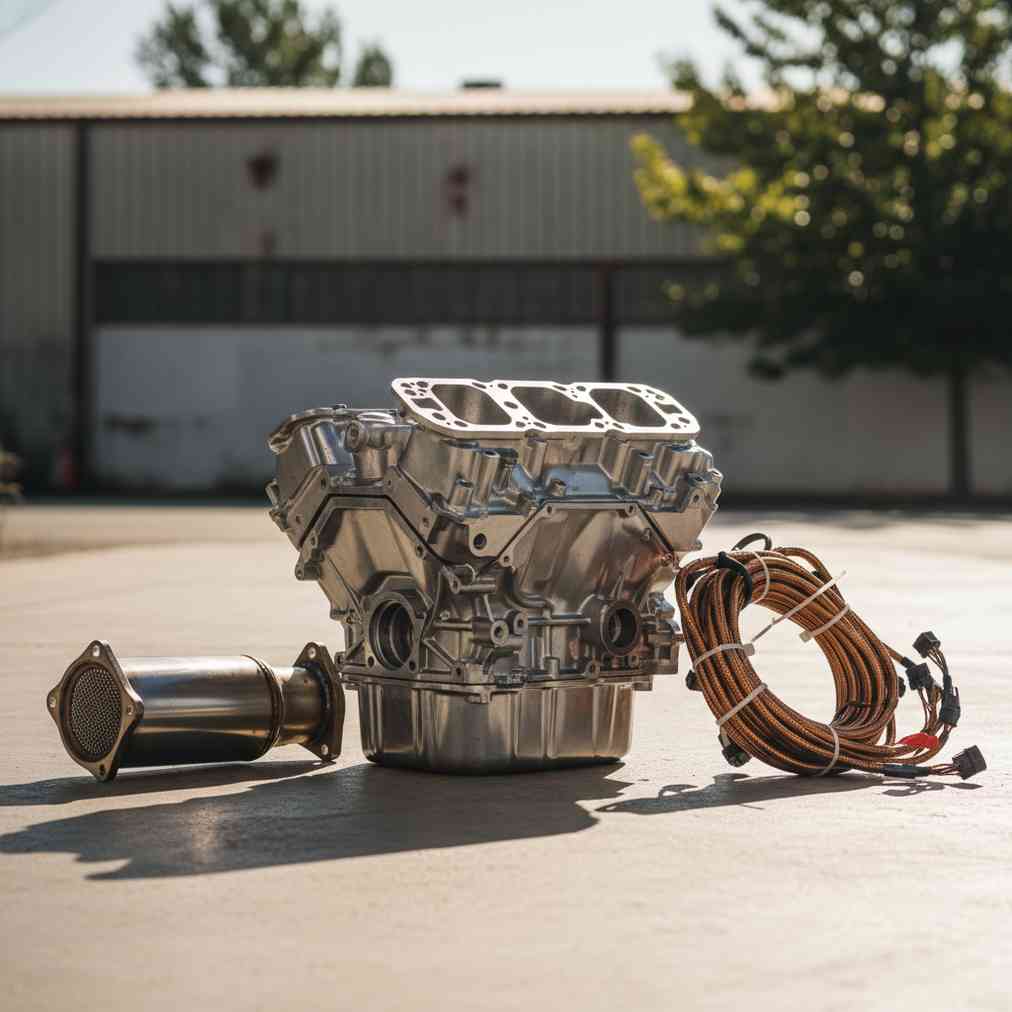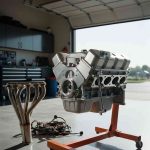Understanding Scrap Metal Pricing: A Comprehensive Guide
Scrap metal pricing at salvage yards operates on a complex system influenced by global commodity markets, metal type, quality, and local demand. Understanding how salvage yards pay per pound can help you maximize your returns when selling scrap metal. The pricing structure varies significantly between different metal types, with some commanding 30-40 times more value than others.
How Salvage Yards Determine Per-Pound Pricing
Salvage yards calculate scrap metal prices based on several key factors that directly impact the per-pound rate you’ll receive. These facilities must balance market conditions with their operational costs to offer competitive pricing while maintaining profitability.
Primary Pricing Factors
- Global commodity markets – International manufacturing demand and currency fluctuations can impact prices by 15-20% monthly
- Metal purity and grade – Cleaner, sorted metals command premium pricing
- Processing costs – Transportation and handling expenses affect final payouts
- Local competition – Regional market dynamics influence pricing strategies
- Volume quantities – Larger loads typically receive better per-pound rates
Current Scrap Metal Prices Per Pound (2025)
Metal pricing varies significantly based on type, with non-ferrous metals (copper, aluminum, brass) commanding substantially higher prices than ferrous metals (steel, iron). Here’s a breakdown of current market rates from various industry sources:
| Metal Type | Price Range (per pound) | Market Demand |
|---|---|---|
| Bare Bright Copper | $3.50 – $5.57 | Very High |
| #1 Copper | $3.40 – $5.45 | Very High |
| #2 Copper | $2.75 – $5.35 | High |
| Clean Brass | $1.80 – $3.30 | High |
| Clean Aluminum | $0.60 – $2.86 | Moderate |
| Steel/Iron | $0.03 – $0.15 | Low |
According to current market data, steel prices have stabilized around $287 per ton, while copper continues to dominate as the most valuable commonly available scrap metal.
Ferrous vs. Non-Ferrous Metals: Understanding the Value Gap
The distinction between ferrous and non-ferrous metals is crucial for understanding pricing disparities. A simple magnet test can help identify which category your scrap falls into, directly impacting your potential earnings.
Non-Ferrous Metals (Higher Value)
- Copper – The king of scrap metals, valued for electrical conductivity
- Aluminum – Lightweight, corrosion-resistant, highly recyclable
- Brass – Copper-zinc alloy with decorative and industrial applications
- Stainless Steel – Corrosion-resistant iron alloy
Ferrous Metals (Lower Value)
- Steel – Most common metal, magnetic properties
- Iron – Base metal for many alloys
- Cast Iron – Heavy, brittle iron variant
“Non-ferrous metals are generally more valuable than ferrous metals due to their rarity, superior corrosion resistance and versatile properties.”
Metal Grading System: How Quality Affects Pricing
Salvage yards use specific grading systems to categorize metals, with higher grades commanding premium prices. Understanding these classifications can help you prepare your scrap for maximum value.
Copper Grading Examples
- Bare Bright Copper – Uncoated, unalloyed copper wire (highest grade)
- #1 Copper – Clean copper tubing, bus bars, clippings
- #2 Copper – Mixed clean copper with minor impurities
- Insulated Copper Wire – Copper with plastic or rubber coating (lowest grade)
According to industry data from pricing sources, the difference between grades can represent 10-30% variation in per-pound rates. Proper sorting and cleaning can boost material value by 15-40%.
Market Trends and Economic Influences
The global scrap metal recycling market is projected to grow from $55.20 million in 2020 to $83.77 million by 2028, with a 7.2% compound annual growth rate. This growth is driven by several key factors:
- Environmental consciousness increasing demand for recycled materials
- Renewable energy technologies requiring more copper and aluminum
- Electronics industry growth driving precious metal recycling
- Construction industry demand for recycled steel and aluminum
Recent data from scrap metal dealers shows that prices are adjusted daily based on commodity market fluctuations, with some facilities updating rates multiple times per day during volatile periods.
Maximizing Your Scrap Metal Payouts: Expert Strategies
Professional scrap dealers recommend specific strategies to maximize your per-pound returns when selling to salvage yards. These techniques can significantly impact your final payout.
Preparation Techniques
- Sort by metal type – Separate copper, aluminum, steel, and brass
- Clean thoroughly – Remove non-metal attachments, paint, and debris
- Strip wire insulation – Bare copper wire pays significantly more than insulated
- Remove rust and corrosion – Clean metals maintain better weight and value
- Separate grades – Don’t mix high-grade with lower-grade materials
Timing and Volume Strategies
- Monitor market prices – Check rates from sources like daily pricing updates
- Accumulate larger quantities – Bulk sales often receive better per-pound rates
- Build relationships – Regular sellers may negotiate better pricing
- Compare multiple yards – Prices can vary significantly between locations
Regional Pricing Variations Across the United States
Scrap metal prices vary significantly by region due to local demand, transportation costs, and processing facility proximity. Understanding these variations can help you find the best salvage yard near me for optimal pricing.
| Region | Copper (avg/lb) | Steel (avg/lb) | Market Factors |
|---|---|---|---|
| West Coast | $4.50 – $5.50 | $0.10 – $0.15 | High tech demand, port access |
| Midwest | $3.80 – $4.80 | $0.08 – $0.12 | Manufacturing centers, lower transport |
| East Coast | $4.00 – $5.00 | $0.09 – $0.13 | Dense population, export facilities |
| South | $3.50 – $4.50 | $0.07 – $0.11 | Energy sector demand, lower costs |
Data from regional pricing sources indicates that coastal areas typically offer higher prices due to export opportunities and industrial demand.
Common Pricing Mistakes to Avoid
Many sellers unknowingly reduce their potential earnings through common mistakes. Understanding these pitfalls can help you maximize your scrap metal value.
Preparation Errors
- Mixing metal types – Combined loads receive lower pricing than sorted materials
- Leaving attachments – Steel bolts on copper reduce overall grade and value
- Selling dirty materials – Contaminated metals can reduce value by 20-40%
- Ignoring moisture – Wet materials add weight but not value, reducing per-pound rates
Transaction Mistakes
- Not weighing beforehand – Verify yard scales with your own measurements
- Accepting first offer – Compare prices from multiple facilities
- Selling during low demand – Monitor market cycles for optimal timing
- Ignoring yard policies – Some facilities offer bonuses for certain materials or quantities
Alternative Options: Beyond Traditional Salvage Yards
While traditional salvage yards remain the primary option for scrap metal sales, alternative methods might offer better per-pound rates for specific materials or circumstances.
Specialized Metal Recyclers
- Electronics recyclers – Higher rates for computer components and circuit boards
- Industrial metal dealers – Better pricing for large quantities of specific alloys
- Direct mill sales – Eliminate middleman markups for substantial quantities
According to industry specialists, focusing on high-value materials and developing relationships with specialized recyclers can increase overall returns by 25-40%.
Future Market Outlook and Emerging Trends
The scrap metal industry continues evolving with technological advances and changing global demands. Understanding these trends helps predict future pricing patterns and opportunities.
Technology Impact
- Advanced sorting systems – Improved metal recovery rates increasing yard efficiency
- Real-time pricing apps – Better market transparency for sellers
- Blockchain tracking – Enhanced supply chain verification
- AI-powered grading – More consistent and accurate metal classification
Market Drivers
- Electric vehicle adoption – Increased demand for copper and aluminum
- Green building initiatives – Higher recycled content requirements
- Infrastructure spending – Government programs driving steel demand
- Renewable energy expansion – Solar and wind installations requiring specific metals
Market analysis from pricing authorities suggests copper prices will remain strong through 2025, driven by infrastructure and renewable energy projects.
Documentation and Legal Considerations
Selling scrap metal involves legal requirements and documentation that can affect your transaction. Understanding these requirements ensures smooth sales and proper compensation.
Required Documentation
- Valid government ID – Driver’s license or state identification required
- Proof of ownership – Documentation showing legal possession of materials
- Vehicle registration – Some states require delivery vehicle information
- Business license – Commercial sellers may need additional permits
Legal Compliance
- Waiting periods – Some jurisdictions require holding periods before payment
- Transaction limits – Daily or monthly selling restrictions may apply
- Photography requirements – Yards may document sellers and materials
- Restricted materials – Certain items require special handling or are prohibited
Converting Your Vehicle: From Transportation to Profit
When your vehicle reaches the end of its useful life, understanding its scrap metal value can help you make informed decisions. Many car owners don’t realize the potential return from their vehicle’s metal content.
If you’re considering selling your vehicle for scrap value, getting an instant quote for junk car can provide immediate insight into your vehicle’s current market value based on metal content and usable parts.
Vehicle Metal Content Value
| Component | Metal Type | Average Weight | Scrap Value |
|---|---|---|---|
| Body/Frame | Steel | 2,000-3,000 lbs | $200-$450 |
| Wiring Harness | Copper | 10-25 lbs | $35-$140 |
| Radiator | Aluminum/Copper | 15-30 lbs | $25-$150 |
| Catalytic Converter | Platinum/Palladium | 2-5 lbs | $50-$500 |
Conclusion: Maximizing Your Scrap Metal Returns
Understanding scrap metal pricing at salvage yards requires knowledge of metal types, market conditions, and preparation techniques. With copper commanding $3.50-$5.57 per pound and steel at $0.03-$0.15 per pound, proper identification and sorting can dramatically impact your returns.
Success in scrap metal sales depends on preparation, market timing, and building relationships with reputable dealers. By following proper sorting techniques, monitoring price fluctuations through resources like market pricing data, and understanding grading systems, you can maximize your per-pound returns.
Remember that cleanliness and sorting can improve your material value by 15-40%, while unsorted or contaminated materials may reduce payouts by 20-40%. Whether you’re selling occasional household scrap or operating a larger collection business, these principles remain consistent across the industry.
Stay informed about market trends, maintain proper documentation, and always compare prices from multiple sources like established scrap dealers to ensure you’re receiving fair market value for your materials. The scrap metal industry continues growing, offering increasing opportunities for those who understand how salvage yards determine per-pound pricing.





Leave a Reply
You must be logged in to post a comment.